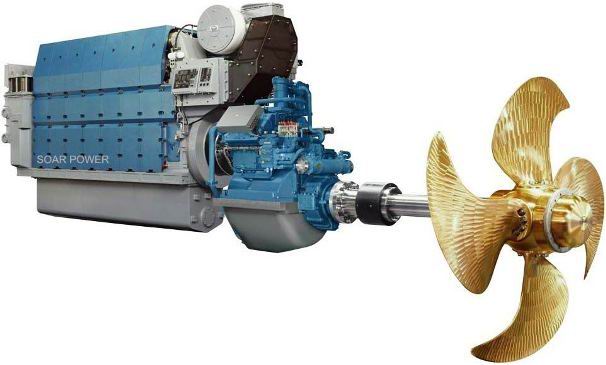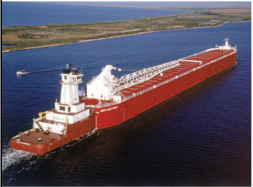| Marine Propulsion Engine
Our Marine engines have simple and smart design suitable for marine applications. The best solution for all types of marine vessels and offshore applications with proven reliability, low emission, low operation cost, multi-fuel capability. Our facilities enable Soar to provide assembly and commissioning of propulsion packaged system. We can offer marine products, including: Marine Propulsion Engines, Marine Auxiliary Engines, Marine Generator Sets as well as Monitoring and Control Systems.
1 Conventional Injection Engines
Our well-established engine types are used in a vast array of applications all over the world. Based on long-term experience of historical proportions, our engines are in continuous development to increase power, reduce emissions, increase reliability, reduce fuel oil consumption, and increase longevity. Our engines are the prime movers of choice in the maritime sector.
2 Common Rail (CR) Engines
The flexibility of our CR technology enables a substantial improvement of the combustion process that improves the fuel economy and reduces emission levels. It is particularly advantageous in the low-load and mid-load ranges. Our engine control system senses a load increase at a very early stage and tremendously improves load response with the activation of Boost Injection in our common rail control. In addition, exhaust gas opacity is markedly reduced, far below the visibility limit. Our CR engines run efficiently on liquid fuels complying with ISO 8217-2010 DMA, DMZ, and DMB, and on residual fuels up to 700 cSt (in compliance with ISO-F-RMK 700).
3 The key features are :
3.1 Heavy Fuel Engine, with same fuel of main engine (Uni-Fuel concept). Hence, the diesel fuel and heavy fuel oil of the viscosity of upto 700cSt at 50 °C is acceptable.
3.2 Economical and Ecological Engine with low fuel consumption, NOx emission, and Smoke, etc.
3.3 Reliable and Practical Engine with simple, smart and robust structure.
● Number of engine components are minimized with Pipe-Free design.
● Most of the components are directly accessible for easier maintenance.
● Individual Part’ maintenance concept is provided.
● Feed System is fully modularized with direct accessibility.
4 Main performance specifications :
4.1 Engine Power
● The engine brake power is stated in kW. For conversion between kW and metric horsepower, please note that 1 bhp = 75 kg·m/s = 0.7355 kW. Ratings are given according to ISO 3046/1:2002, ISO 15550:2002. According to ISO 15550:2002, the power figures in the tables remain valid within a range of ±3% up to tropical conditions at sea level, i.e.:
- compressor inlet temperature 45 °C
- compressor inlet pressure 1,000 mbar
- sea water temperature 32 °C.
● Blocking of Output
Blocking of output is made for engines driving a propeller at 100% of the rated output. For engines powering an alternator, blocking of output is made at 110%. However, operation above 100% load is only recommended for a short period of time for recovery and prevention of a frequency drop.

Marine Propulsion Engine |

Cargo ship |
|
4.2 Specific Fuel Oil Consumption (SFOC) and Heat Rate
● The stated consumption figures refer to the following reference conditions according to ISO 3046-1:
- ambient air pressure: 1,000 mbar
- ambient air temperature: 25 °C (77 °F)
- charge air temperature: according to engine type, corresponding to 25 °C cooling water temperature before CAC.
The figures are given with a tolerance of +5% and without engine driven pumps. Attached pumps and engines running in suction dredger operation will require additional fuel. In accordance with the NOx Technical Code 2008 of the International Maritime Organization, DM-grade fuel oil is used as reference fuel oil for engine tests and, thus, also forms the basis for the SFOC figures stated for engines in liquid fuel operation.
● Unless otherwise specifically stated, SFOC figures are based on a lower calorific value of the fuel oil of 42,700 kJ/kg and, in addition for engines with common rail injection (CR-engines), on DMA-grade fuel oil (ISO 8217-2010). For engines with conventional fuel injection, SFOC figures are based on DMB-grade fuel oil (ISO 8217-2010).
4.3 Specific Lube Oil Consumption (SLOC)
The specific lube oil consumption is specified at MCR (maximum continuous rating) with a tolerance of 20%.
|
|